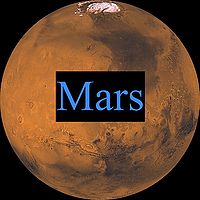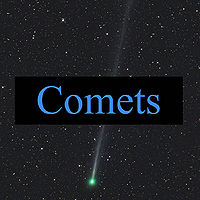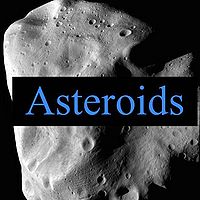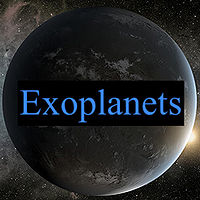Main Page
(→Basic Tutorial and Notes (DaVinci Interface)) |
|||
| (15 intermediate revisions by 2 users not shown) | |||
| Line 1: | Line 1: | ||
| − | = | + | <div style="font-size:150%;"> |
| + | '''Welcome to the KRC Wiki''' | ||
| + | </div> | ||
| + | <div style="font-size:100%;"> | ||
| − | + | KRC is a computer program designed to compute surface and subsurface temperatures for planets and satellites with or without modest atmospheres. A single KRC run can handle complex subsurface physical properties for a global set of latitudes at a full set of seasons, with enough depth to capture the annual thermal wave, and to compute seasonal atmosphere condensation mass. Initially developed for Mars at the dawn of space exploration, there are generalities that allow this code set to be used for any solid body with any spin vector, in any orbit (around any star), with or without an atmosphere. The code is largely in FORTRAN and has evolved over 50 years and has been used extensively by the planetary science community. | |
| − | + | ||
| − | + | KRC was developed by Hugh Kieffer with NASA funding. The web-site is maintained by Arizona State University, The interactive interface is supported by a Caltech, JPL, Northern Arizona University consortium. | |
| − | + | ||
| − | + | ||
| − | + | ||
---- | ---- | ||
| − | |||
| − | |||
| − | |||
| − | [ | + | ===Run KRC=== |
| − | + | ||
| − | + | KRC can be downloaded from a dedicated [http://krc.mars.asu.edu/svn/listing.php?repname=KRC&path=%2Ftags%2F&#a2752a4ad0822c5acbda0ff9fd26a5c26 repository] with instructions for compilation on [[Mac_instructions | Mac]] and [[Linux_Instructions | Linux]] provided. | |
| + | |||
| + | 1: KRC can run from the command line using a pre-formatted text 'inputFile'; this is a non user-friendly approach with direct interface to the code and has access to every KRC parameter (about 200 in all); | ||
| + | |||
| + | 2: Alternatively, KRC can run from a dedicated [https://jmars.mars.asu.edu/node/2612 JMARS] layer... | ||
| + | |||
| + | 3: A .dvrc can be downloaded from this [[link_DVRC | page]] to run KRC through user-friendly DaVinci. This site provides basic information on how to run KRC in this manner. | ||
| + | |||
| + | ===More About KRC=== | ||
| + | |||
| + | More general information about the code is available [[link | here]] and in a [http://onlinelibrary.wiley.com/doi/10.1029/2012JE004164/abstract Journal of Geophysical Research 2013 Article]. | ||
| + | |||
| + | A partial list of peer-reviewed publications using KRC is available [http://krc.mars.asu.edu/index.php?title=Publications here]. | ||
| + | |||
| + | White papers compiling notes on the code evolution are available [[Robin_WP | here]]. | ||
| + | |||
| + | ===Body-Specific Tutorial (DaVinci Interface)=== | ||
| + | |||
| + | |||
| + | [[Image:mars_KRC_Blue_black.jpg|left|link=KRC for Mars|200px]] [[Image:europa_KRC_Blue_v_3_black.jpg|link=KRC for Europa|200px]] [[Image:bennu_KRC_Blue_black_3.jpg|link=KRC for Bennu|200px]] [[Image:moon_Blue_v_2_black.jpg|link=KRC for The Moon|200px]] [[Image:phobos_Blue_v_2_black_2.jpg|left|link=KRC for Phobos|200px]] | ||
| + | [[Image:comet_KRC_Blue_v_3_black_2.jpg|link=KRC for Comets|200px]] [[Image:asteroid_KRC_v_5_Blue_black_3.jpg|link=KRC for Asteroids|200px]] [[Image:exoplanets_KRC_black_4.jpg|link=KRC for Exoplanets|200px]] | ||
| + | ===Basic Tutorial and Notes (DaVinci Interface)=== | ||
| + | [[Material Properties and Regolith Layering]] | ||
| + | [[Planetary Fluxes]] | ||
| + | [[Simulated One Point Mode]] | ||
| + | [[Dust Opacity For Mars]] | ||
| + | [[Atmospheric Parameters]] | ||
| + | [[Condensable Atmosphere]] | ||
| − | + | [[Photometric Functions]] | |
| − | + | ||
| − | + | ||
| − | + | ||
| − | + | ||
| − | + | ||
| − | + | ||
| − | + | ||
| − | + | ||
| − | + | ||
| − | + | [[Heat Flow and Bottom Boundary Condition]] | |
| + | [[Eclipses]] | ||
| − | + | [[Ls vs. Julian Dates vs. Gregorian Dates]] | |
| + | [[Thin Layers of Low TI Material]] | ||
| − | + | ===Known DaVinci Interface Issues=== | |
| + | This [[link_Issues | page]] lists known Issues with the Davinci Interface. | ||
| − | + | ===Wishes=== | |
| − | + | This [[link_wishes | page]] lists wishes expressed by KRC users. | |
Latest revision as of 10:14, 11 January 2021
Welcome to the KRC Wiki
KRC is a computer program designed to compute surface and subsurface temperatures for planets and satellites with or without modest atmospheres. A single KRC run can handle complex subsurface physical properties for a global set of latitudes at a full set of seasons, with enough depth to capture the annual thermal wave, and to compute seasonal atmosphere condensation mass. Initially developed for Mars at the dawn of space exploration, there are generalities that allow this code set to be used for any solid body with any spin vector, in any orbit (around any star), with or without an atmosphere. The code is largely in FORTRAN and has evolved over 50 years and has been used extensively by the planetary science community.
KRC was developed by Hugh Kieffer with NASA funding. The web-site is maintained by Arizona State University, The interactive interface is supported by a Caltech, JPL, Northern Arizona University consortium.
Contents |
[edit] Run KRC
KRC can be downloaded from a dedicated repository with instructions for compilation on Mac and Linux provided.
1: KRC can run from the command line using a pre-formatted text 'inputFile'; this is a non user-friendly approach with direct interface to the code and has access to every KRC parameter (about 200 in all);
2: Alternatively, KRC can run from a dedicated JMARS layer...
3: A .dvrc can be downloaded from this page to run KRC through user-friendly DaVinci. This site provides basic information on how to run KRC in this manner.
[edit] More About KRC
More general information about the code is available here and in a Journal of Geophysical Research 2013 Article.
A partial list of peer-reviewed publications using KRC is available here.
White papers compiling notes on the code evolution are available here.
[edit] Body-Specific Tutorial (DaVinci Interface)
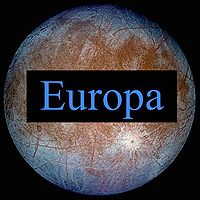
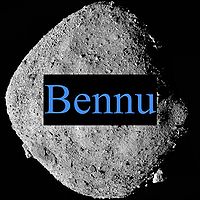
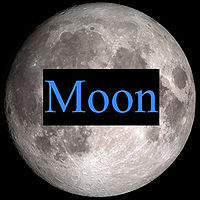
[edit] Basic Tutorial and Notes (DaVinci Interface)
Material Properties and Regolith Layering
Heat Flow and Bottom Boundary Condition
Ls vs. Julian Dates vs. Gregorian Dates
Thin Layers of Low TI Material
[edit] Known DaVinci Interface Issues
This page lists known Issues with the Davinci Interface.
